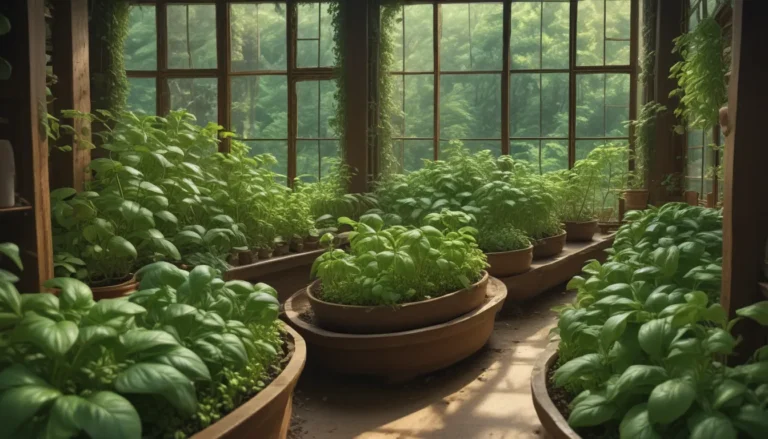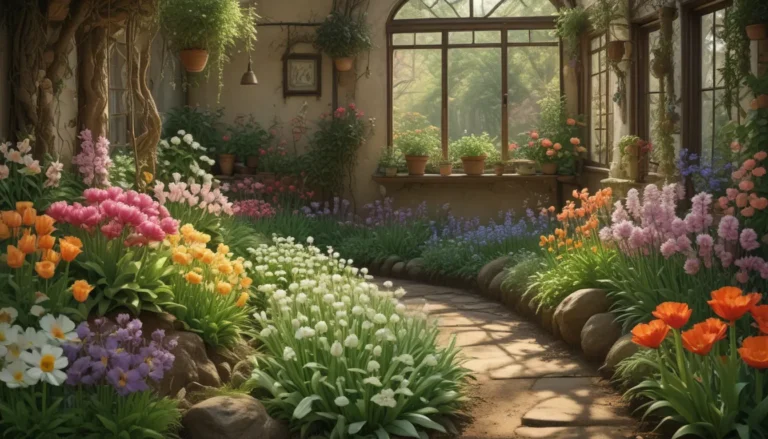Growing Heliotropes: Fragrant Vintage Charmers

If you are looking to add a touch of fragrant vintage charm to your garden, heliotropes are the perfect choice. These tender shrubby perennials, part of the borage family, boast clusters of sweetly-scented blossoms in shades of purple, blue, or white. With their dark green pleated leaves, heliotropes resemble hydrangeas or viburnums, reaching a mature height of one to three feet tall.
In this comprehensive guide, you’ll learn everything you need to know to cultivate this cottage garden classic. From the history and cultivation to propagation and best uses, we’ve got you covered. Let’s dive in!
What You’ll Learn
Here’s what’s in store:
- Cultivation and History
- Propagation
- How to Grow
- Growing Tips
- Pruning and Maintenance
- Where to Buy
- Managing Pests and Disease
- Best Uses
- Quick Reference Growing Guide
Cultivation and History
The name “heliotrope” originates from the Greek words helios (sun) and tropos (turn), referring to the plant’s habit of turning to face the sun. These charming flowers come in varying shades of purple and white, with five-lobed clustered blooms reminiscent of forget-me-nots.
Despite its lovely appearance, it’s essential to note that the entire heliotrope plant is toxic to both people and animals. The plant is best suited for gardeners in USDA Hardiness Zones 9 to 11, thriving in temperate conditions.
Originally discovered in the Andes mountains of Peru in the 18th century, heliotropes made their way to Europe, enchanting gardeners with their beguiling fragrance and lush cottage garden appeal.
Heliotrope Plant Propagation
Heliotropes can be easily propagated from seeds or stem cuttings. Here’s how:
From Seed
Starting seeds indoors 10 to 12 weeks before the last frost date is an ideal way to kickstart heliotrope growth. Germination typically takes 28 to 40 days, requiring a consistent soil temperature between 70-75°F.
From Cuttings
Alternatively, you may opt for stem cuttings, an excellent method to clone a favorite plant. Rooting cuttings indoors or in a greenhouse can yield robust plants for the following season.
From Seedlings or Transplanting
If starting from scratch isn’t your preference, nursery seedlings are readily available for transplanting into your garden or containers.
How to Grow Heliotrope Flowers
Heliotropes thrive in full sun locations with organically rich, well-draining soil. Ensuring consistent moisture without waterlogging is crucial, especially when growing in containers.
Indoor heliotropes can also make charming houseplants with adequate sunlight and cool nighttime temperatures. Regular feeding with flowering plant food facilitates abundant blooming throughout the growing season.
Growing Tips
To ensure your heliotropes reach their full blooming potential, keep the following growing tips in mind:
- Provide full sun with a touch of afternoon shade in hotter regions.
- Maintain even moisture with well-draining soil.
- Feed with flowering plant food for profuse blooms.
Pruning and Maintenance
While heliotropes are often described as low-maintenance, proper care is essential for optimal growth and blooming. Regular pruning, fertilization, and repotting ensure healthy plants both indoors and outdoors.
Stay diligent in monitoring soil moisture levels, avoiding both extreme dryness and waterlogging. Regular pruning of leggy stems and spent blossoms promotes vigorous growth and reblooming.
Where to Buy Heliotrope Flowers
Heliotrope cultivars offer various shades of purple and blue, along with white blossoms. Popular varieties like ‘Marine’ are favored for their compact size and disease resistance, suitable for Zones 9 to 11.
Managing Pests and Disease
While heliotropes are generally pest and disease resistant, occasional issues can arise, particularly in suboptimal conditions. Common pests include aphids, mealybugs, spider mites, and whiteflies, requiring prompt treatment with neem oil or insecticidal soap.
To avoid potential fungal infections, ensure adequate soil drainage and moderate soil moisture levels. Regular monitoring and proper care can prevent most pest and disease problems.
Best Uses for Heliotrope Flowers
Heliotropes lend themselves to a variety of garden applications, from border edging to hanging planters and window boxes. Their fragrant blooms attract butterflies and beneficial pollinators, enhancing the garden’s allure.
Don’t hesitate to add heliotropes to your garden for a touch of old-world charm and delightful fragrance. Pair them with companion plants like African daisies, dahlias, and hydrangeas for a captivating floral display.
Quick Reference Growing Guide
Finally, refer to our quick reference guide for essential information on heliotrope cultivation at a glance:
- Plant Type: Tender shrubby perennial
- Flower / Foliage Color: Purple to white; dark green tinged with purple
- Native to: Peru
- Hardiness (USDA Zone): 9-11
- Soil Type: Organically rich
- Bloom Time / Season: Summer and fall
- Exposure: Full sun to part shade
- Spacing: 12-18 inches
- Height: 1-3 feet
- Spread: 1-3 feet
- Water Needs: Moderate
Grandma’s Favorite in the 21st Century
Heliotropes, with their vintage charm and enchanting fragrance, continue to captivate gardeners in the 21st century. From their rich history to their vibrant blooms, these timeless classics add a touch of elegance to any garden.
Whether you’re a seasoned gardener or a novice enthusiast, growing heliotropes can be a rewarding experience. Start with proper cultivation and care practices, and watch your garden transform into a fragrant oasis of beauty.
Have you planted heliotropes in your garden? Share your experience in the comments below. And for more floral inspiration, check out our guides on Dianthus flowers, Garden Pinks, and Hardy Hibiscus.
By incorporating detailed information, growing tips, propagation methods, and best uses for heliotropes, this article provides readers with a comprehensive guide to cultivating these fragrant vintage charmers. Whether you’re a beginner or an experienced gardener, this article offers valuable insights and practical advice for growing heliotropes successfully.





